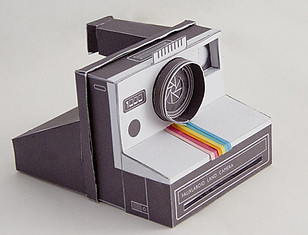Why take photos?

How Cameras Work
In this section of the course, we learn about the parts of a camera and how those parts work to capture an image. We compare the parts of a Camera Obscura to the parts on a modern camera with a focus on function, similarities and differences.
Topics of Study
-
Exterior Parts (body, lenses, physical parts)
-
Interior components (mirror, prism, sensor)
-
Controls (dials, switches and buttons)
-
Priority modes (Manual, aperture, shutter speed, auto/programmed auto)
-
ISO
-
The Control Triangle
-
Manual and AutoFocus
-
Shutter release
-
The Tap Analogy
LESSON 2.1
HOW CAMERAS WORK:
ANATOMY OF A CAMERA
2.1
Anatomy of a Camera
In this set of lessons we dissect a medium format camera to see the internal mechanisms that make it work. By the end of the lesson students should be able to identify the major components of a modern camera and understand the function the various parts play in image creation.

LESSON 2.2
HOW CAMERAS WORK:
THE CONTROLS
2.2
The Controls
In this set of lessons we switch the camera off auto. We explore the various priority modes and look into what is happening in each scenario. By the end of these lessons, students should understand the advantages and limitations of the various modes, and be able to cite instances in which a photographer might use specific camera modes and settings. After using the camera simulator app and having the tap analogy outlined, students should also understand the control triangle and how to balance it.

COMPLETION
TASK 2.3:
PINHOLE CAMERA
CT2.3

COMPLETION
TASK
Completion Task: Pinhole Camera
Now that you have seen how a camera works and in fact been inside a Camera Obscura, you will make your own camera. You will use photo paper as your sensitized material, and use your camera to record a scene as an image.
A2.5
LEVITATION

Fictionalizing a moment: Levitation
Your first photo assignment is a levitation activity. Although this is typically done using Photoshop, we will begin by simply using shutter speed and timing to pull off the illusion.
2.6
REVIEW

Quiz Review
In unit 2 we look inside our camera. We learn about settings, buttons and what knobs and controls are doing. Your comprehension of what is happening inside your camera is tested in this quiz.
